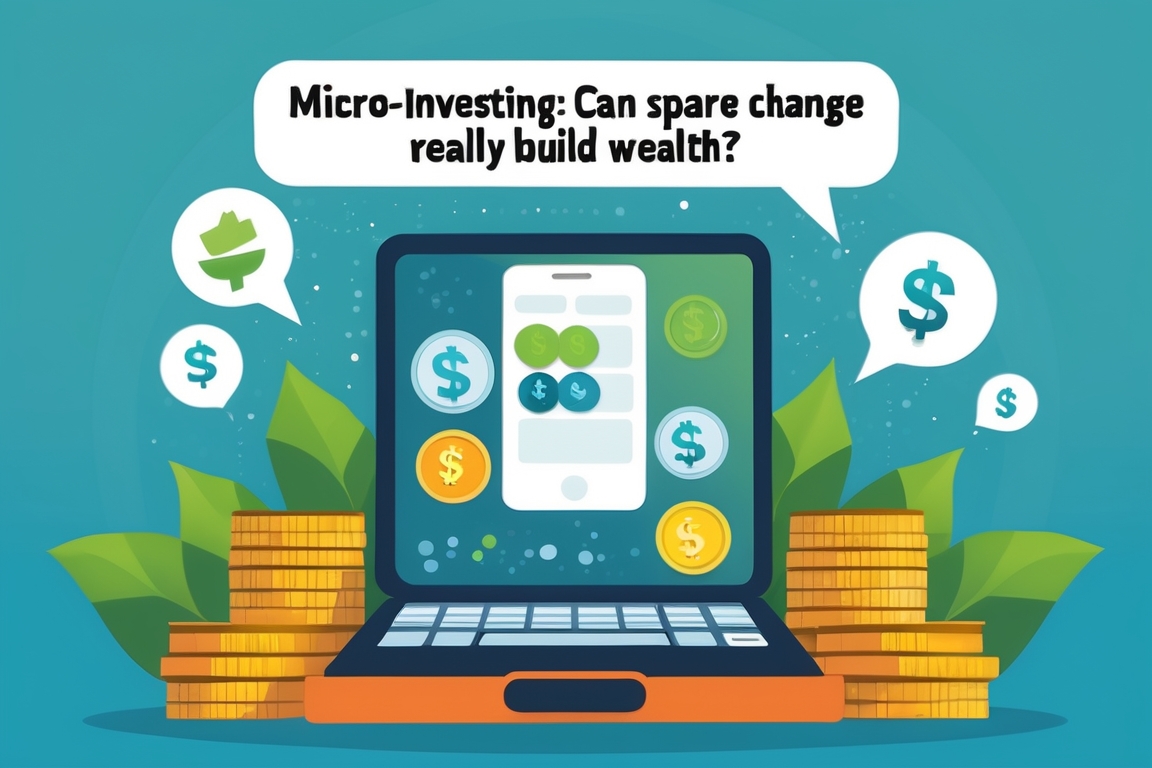Imagine if every time you bought a coffee, a few cents went straight into your investment portfolio. That’s the promise of micro-investing—a growing trend that aims to make investing simple, accessible, and unintimidating, especially for beginners. With apps like Acorns, Stash, and Robinhood, you no longer need thousands of dollars or an MBA in finance to start building wealth. All you need is your spare change.
But can micro-investing really make a difference to your long-term financial health? Or is it just another clever fintech gimmick? Let’s break it down.
What Is Micro-Investing?
Micro-investing allows users to invest small amounts of money—often just pennies or a few dollars—into diversified portfolios. The most common model is round-up investing, where the app rounds up your debit or credit card purchases to the nearest dollar and invests the difference. For example, if you spend $3.75 on coffee, 25 cents is set aside and invested.
Apps like Acorns automate this entire process. Over time, these tiny investments can grow through the power of compound interest. Users can also set recurring contributions or one-time deposits to accelerate their progress.
The goal? To make investing less intimidating, especially for younger or lower-income individuals who may feel shut out of traditional wealth-building methods.
Why Micro-Investing Works
- Low Barrier to Entry
Traditional investing can feel overwhelming. You need to understand markets, choose funds, and often meet minimum investment requirements. Micro-investing removes those hurdles. You can start with as little as $5. - Automated and Hands-Off
Micro-investing apps handle everything—from allocating your funds into diversified ETFs (exchange-traded funds) to automatically rebalancing your portfolio. This makes it ideal for people who want to “set it and forget it.” - Habit Formation
Regular investing—even in small amounts—creates a powerful habit. Much like saving change in a piggy bank, micro-investing builds consistency and discipline, which are key ingredients to long-term wealth. - Compound Growth Over Time
While your spare change might not seem like much, over years or decades, it can grow significantly thanks to compound interest. The earlier you start, the greater the potential reward.
The Numbers: Does It Really Add Up?
Let’s say you round up an average of $0.50 per transaction and make 50 transactions a month. That’s $25/month—or $300/year. Add in a modest return of 7% annually, and after 10 years, you’d have about $4,200. Not life-changing, but certainly not insignificant, especially if you increase contributions over time.
Now, if you set a recurring investment of $50/month in addition to round-ups, that amount grows to nearly $9,500 after 10 years at the same return rate. The lesson? Spare change gets the ball rolling, but adding regular contributions supercharges the impact.
Best Micro-Investing Apps (as of 2025)
- Acorns
- Best for automatic round-up investing
- Features retirement and family accounts
- Monthly fee: $3–$5
- Stash
- Best for learning about individual stocks
- Offers banking features and budgeting tools
- Monthly fee: $3–$9
- Robinhood
- Best for commission-free trading (not strictly micro-investing, but user-friendly for beginners)
- No fees for basic accounts
- Allows cryptocurrency investing
- Public
- Combines social media with investing education
- No account minimums
- Great for beginner-friendly research tools
The Downsides and Cautions
While micro-investing is a great way to ease into the world of finance, it’s not perfect.
- Small Returns Without Extra Contributions
If you only invest your spare change and never increase your contributions, growth will be slow. It’s better than nothing—but won’t replace a retirement plan. - Monthly Fees Can Eat Into Gains
Paying $3/month doesn’t sound like much, but if you’re only investing $10–$20 per month, those fees can significantly reduce your returns. Always check the fee-to-investment ratio. - Not a Substitute for Full Financial Planning
Micro-investing is a starting point—not a full financial plan. You’ll still need to think about emergency savings, insurance, debt repayment, and retirement.
Tips for Getting the Most Out of Micro-Investing
- Start with Round-Ups, Then Scale Up
Begin with automatic round-ups, but aim to set recurring weekly or monthly contributions as your budget allows. - Use It as a Gateway to Bigger Investing
As your confidence grows, explore more traditional investment options like IRAs, 401(k)s, or brokerage accounts. - Review Fees Regularly
Ensure the value of your investment outweighs the cost of maintaining the account. - Stick With It
The key to success is consistency. Even small amounts, invested consistently over decades, can yield powerful results.
Final Thoughts
Micro-investing isn’t a get-rich-quick scheme. It’s a gateway. It helps beginners overcome psychological and financial barriers to start growing their wealth. With a little commitment and smart scaling, spare change can build meaningful savings over time.
Think of it like planting seeds—each round-up may be tiny, but with time, attention, and a few extra contributions, they can grow into something substantial. Whether you’re new to investing or just looking for a painless way to save, micro-investing is a tool worth considering on your financial journey.





